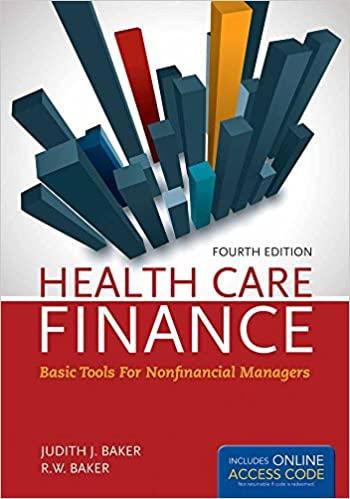Answered step by step
Verified Expert Solution
Question
1 Approved Answer
2 Use the information in the table to answer questions ( a ) ( e ) . Expected Return Standard Deviation Stocks, S 8 %
Use the information in the table to answer questions ae
Expected Return Standard Deviation
Stocks, S
Bonds, B
The correlation between stocks and bonds is rho SB
a Calculate the covariance of the returns for stock and bonds.
b Calculate the variance of returns for a portfolio that is invested in stocks and invested in bonds.
c You are trying to decide among three possible allocations: in Stock, in Bonds, or Stock Bonds these are the only choices
Your utility function depends on expected return and variance and your risk aversion coefficient is A Which of the three allocations is best for you?
Briefly explain your answer.
d The riskfree rate is percent. The CAL that is tangent to the portfolio frontier of stock and bonds has an expected return equal to percent this is an approximation, but you should use this information
Note : The tangency portfolio does not have any money invested in the riskfree asset
Note : The portfollio from part a is not the tangency portfolio
You wish to construct an efficient portfolio with an expected return equal to percent. What are the asset weights in the portfolio?
That is what are the weight of stocks, bonds and bills in the portfolio?
e Tabulate and graph the investment opportunity set of the two risky funds.
Use investment proportions for the stock fund from to in increments of Please show your work in the sheet labelled Graph.
Step by Step Solution
There are 3 Steps involved in it
Step: 1

Get Instant Access to Expert-Tailored Solutions
See step-by-step solutions with expert insights and AI powered tools for academic success
Step: 2

Step: 3

Ace Your Homework with AI
Get the answers you need in no time with our AI-driven, step-by-step assistance
Get Started


